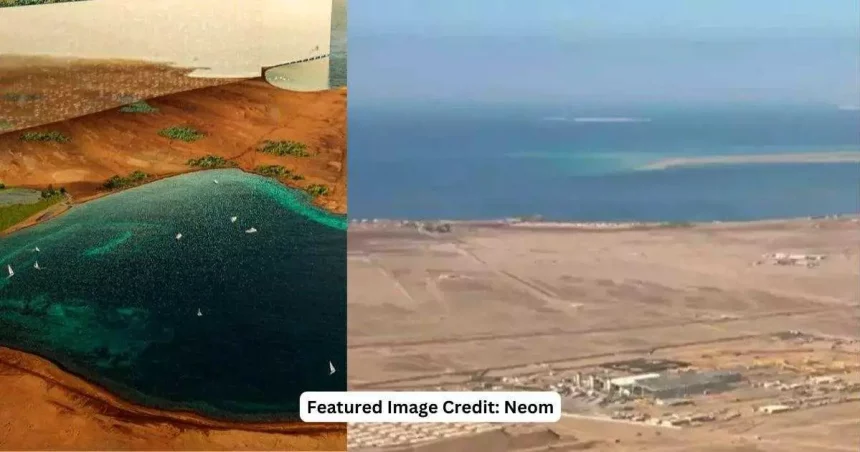In the heart of Saudi Arabia’s ambitious vision to transform urban living, the Neom project stands out as an emblem of futuristic city planning and sustainability. At the core of this visionary initiative lies The Line, a proposed cognitive city that promises groundbreaking advancements in architecture and efficiency. Initially conceived as a 105-mile marvel of mirrored urban design blending seamlessly with nature from the desert to the Red Sea, The Line has recently undergone a significant reduction in scope, now focusing on a mere 1.5-mile stretch.
This unexpected change has sparked widespread curiosity and speculation. What factors led to this dramatic shift? How will it impact the overarching goals of the Neom project? These questions add an intriguing layer of mystery to an already captivating venture, capturing the attention of global audiences and stakeholders alike.
The Original Vision for ‘The Line’
The Line first captivated the world with its bold concept as a 105-mile cognitive city cutting through the diverse landscapes of Neom, from rugged mountains to serene coastlines. As a centerpiece of the $1.5 trillion Neom development, The Line represented the future of urban living, aiming to seamlessly blend with nature while minimizing environmental impact.
Central to The Line’s design philosophy was its mirrored architecture, designed to reflect the natural surroundings and enhance visual aesthetics while leveraging solar energy for sustainability. The city’s layout prioritized efficiency, with daily essentials accessible within a five-minute walk, reducing reliance on cars and promoting a cleaner environment. Advanced infrastructure supporting ultra-fast transit systems and smart-city technologies was poised to revolutionize urban living.
Amidst grand aspirations for innovation and sustainability, recent developments have led to a significant downsizing of The Line project. Originally planned to span 105 miles, budget constraints and logistical challenges prompted a reevaluation, resulting in a more modest 1.5-mile footprint. This revised approach underscores the complexities and realities of executing large-scale urban developments, demanding adaptability and pragmatism.
Despite the scale-back, progress on The Line continues, with initial infrastructure completed on the reduced stretch. By 2030, developers envision accommodating around 300,000 residents within a high-tech, environmentally conscious urban setting, albeit on a smaller scale than initially envisioned.
Challenges and Responses
Navigating the complexities of a transformative project like The Line within the Neom framework poses various challenges. Budgetary constraints, logistical hurdles, and resource management issues necessitated the project’s downsizing, prompting strategic responses from government and developers to ensure its continued viability.
Addressing these challenges head-on, stakeholders are prioritizing innovation in construction and project management, securing funding through partnerships, and maintaining a commitment to sustainable urban development. By adapting strategies to emphasize quality and sustainability over sheer scale, the project remains a testament to Saudi Arabia’s dedication to innovation and progress on the global stage.
Impact on Vision 2030
The scale-back of The Line project presents both challenges and opportunities for Vision 2030, Saudi Arabia’s strategic framework for economic diversification and technological advancement. While the reduced scale may impact investment and job creation, it also allows for a more focused and sustainable development approach, aligning with the nation’s goals of creating a futuristic, diversified economy.
Strategic shifts within Vision 2030 emphasize quality, sustainability, and innovation, positioning The Line as a pioneer in smart city development on a global scale. Despite adjustments, The Line remains a beacon of progress and a symbol of Saudi Arabia’s commitment to sustainable urban living and technological advancement.






